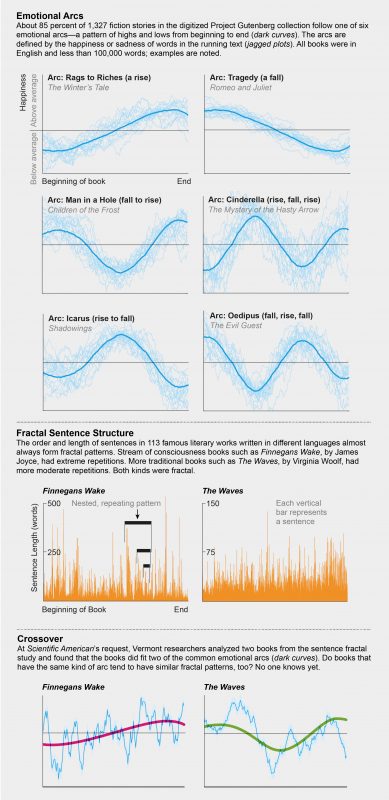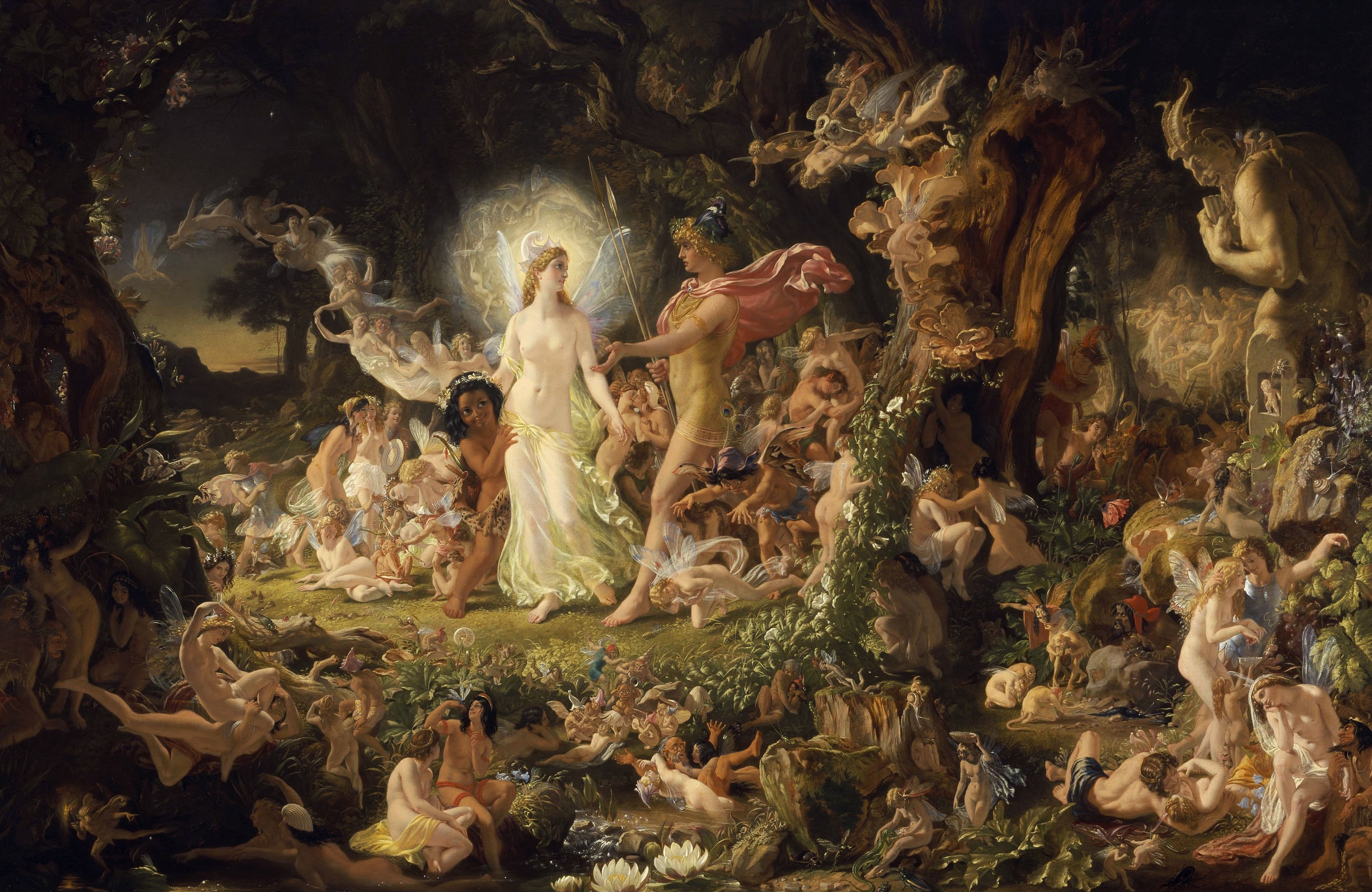
I discovered Brandon Sanderson a few years back, introduced him to my son, and we basically read all that he has ever written (that we could buy). He is a very talented fiction writer. And now I discovered that he is a great teacher: good at explaining, generous with ideas, and easy with advice. He doesn’t shy away from talking about his own experiences, thus making his classes gain a very concrete dimension. I have enjoyed his online lectures so much, that I am now posting his classes in sequence and adding additional links to similar lectures that are still worth scanning through. I hope these are as useful to you as they were to me. Happy writing!
Very Grateful:
Thank you writeaboutdragons for adding careful notes and creating 2012 BYU videos!
Very grateful to the Camera Panda team, Jon Deering and Earl Cahill, for filming, editing, and providing careful annotations (shown here in quotes). Excellent work!
Another shout out to zmunk who posted videos of Brandon’s presentations at JordonCon.
Brandon Sanderson’s 2012 Semester at BYU: 1. Creative Writing — Ideas & Outlining
0:12 / Introduction to being a writer
– Writing is not about inspiration, ideas, or luck
– Writing is a skill that needs to be learned and practiced
– Publishers can gauge your skill from the first page6:55 / Course focus will be on Novel format
– If you don’t read a lot of short fiction, you shouldn’t write a lot of short fiction
– Writing short stories is no longer considered “the good way” to break into writing novels10:25 / Ideas are cheap
– A great writer will make a great novel from bland ideas
– A weak writer will make a bad novel from the best ideas
– A book does not come from a strike of inspiration
– Jim Butcher anecdote: was given two silly ideas from an online forum challenge (Pokemon and lost roman legion), and wrote a best-selling novel17:42 / Class format
24:37 / Discovery writers vs outliners/architects
– Learning to write is about learning the different tools available and finding ones that work for you
– Discovery writers work best without a lot of structure
– George RR Martin is this type of writer; he uses the term gardener
– Outliners work best when they know what their goal is, and they break it out into steps
– – A sequence of events or a map to help write the book
– – Orson Scott Card is this type of writer, as is Brandon Sanderson
– Outliners tend to have explosive endings because they can plan it in advance
– Most people fall into one of these camps, but you really don’t know which is better for you until you try both31:00 / Pitfalls of each method
– Discovery writers like to revise a lot, and get it right before they move on
– – Need to learn to just keep going so they don’t get stuck
– Discovery writers have problems with endings, because they tend to finish the arcs abruptly
– Outliners have “worldbuilder’s disease”
– – Need to focus the building so they can actually write the story
– Brandon outlines his plots and discovery writes his characters37:11 / Writing groups & workshopping
– More useful for outliners than discovery writers, because feedback can influence the undiscovered plot
– Good feedback includes a list of specific things that you liked, and a list of specific things that didn’t work for you
– “You should…” is a not a helpful comment.
– Describing your reaction to something is much more helpful than telling them what you think is wrong with it
– Ignore small stuff; don’t talk about prose unless it is a big issue.
– – Plot, character, and setting are the most important things to focus on
– When you are being critiqued, do not speak! Soak it in and don’t influence the feedback.
– Put all feedback aside until you come back around to revise the book
Brandon Sanderson’s 318R, 2016: #2. Creative Writing — Cook vs. Chef
This is another version of a lecture that describes different writing styles.
0:10 – cake (cook vs. chef)
6:04 – what makes a story?
7:28 – 4 circles (and a box)
9:39 – character sliders
15:48 – what makes a character interesting?
18:45 – everyman and superman
32:22 – the villain problem
45:20 – handicaps and flaws
51:00 – the dossier method
54:48 – application
Brandon Sanderson’s 2012 Semester at BYU: 2. Creative Writing — Plots and Genres
0:12 / What makes a good plot
– Book is an intersection of three things: character, setting, and plot (concept), with a conflict
– Biggest rookie mistake is making an inactive protagonist; you should place them close to the conflict
– As soon as you start to place your characters at these conflict points, the story begins to emerge10:25 / Idea generation from stories you loved reading
– Boil down the story to its core, and build your own story with a similar core
– Usually one idea is not enough; try to intersect a few separate ideas14:44 / Examples of conflicts between parts of a story
16:30 / Outlining
– Brandon thinks of cool ideas then looks for conflicts/relationships between ideas
– – When he has enough of these links, he starts a story
– Brainstorm to fill in holes in the ideas to have good conflicts
– Plot backwards: what are the cool things to happen in the book?
– – Cool things trump idea consistency; you can find ways to make it work after
– – Once he has these “big moments”, then step backwards: what needs to happen before this moment will be satisfying?28:16 / Points on a map
29:12 / Questions on brainstorming and plotting
37:42 / Plotting by discovery for Alcatraz books
– Adding viewpoints complicates a book; as a new writer don’t over do it off the bat
– – Fewer viewpoints also makes it easier to write without an outline
– Generate a few interesting/funny/cool events, then brainstorm to make it work together
– – For kids, random elements mixed together can be humor; doesn’t work for adults as well51:10 / Children’s genres and audience
– Knowing your genre will help you place where you are going to market you book, and help guide decisions
– Middle grade: targets 8 – 13
– – Sweet spot is 6th-7th grade
– – Max is 55k words
– – Often whimsical stories; leave our world go into another; often the adults are useless in the plot
– – Usually 3rd person; usually 1 viewpoint
– YA; targets 13-19
– – Max is ~75K words, but less strict
– – Frequently set at or around school; frequently boys & girls; often adults are untrustworthy
– – YA is not content curated by publisher as MG, so books can be graphic and intense1:09:00 / Adult genres
– The big fantasy divisions are: epic, heroic, and urban.
– The big SF divisions are: military, space opera, hard sci-fi.
– – Dystopian right now is more often in YA1:11:50 / Epic fantasy
– Large cast
– World-building focus
– The world is at stake
– Suggestion for new writers: write it as a stand alone with sequel potential
– – Don’t stop in the middle until you are an established author
– 120-150K words1:14:31 / Heroic fantasy
– Gritty “dudes with swords”
– Smaller cast
– 80-100k words
– Lots of action and movement1:16:42 / Urban fantasy
– “Chicks in leather kill demons”
– Our world but with a dark fantasy underworld
– Often mystery-style plots; often very fast paced with thriller-style hooks in each chapter
– 70K words1:18:43 / Military sci-fi
– Space marines; big space battles that are realistic
– Familiarity with military helps; guns and ranks
– 80-100K words1:21:00 / Space opera
– Adventures in space
– – Battlestar Galactica, Star Wars
– 80-100K words1:23:28 / Hard sci-fi
– “Written by people with PhD”
– The details matter, the science and how-it-works are part of the story
– 80-100K words, but much more lenient
Kurt Vonnegut — the Shape of Stories
And here is a meta analysis of all possible story plots by Kurt Vonnegut — the shape of stories:
Brandon Sanderson’s 2012 Semester at BYU: 3. Creative Writing — Point of View
0:12 / Introduction to prose
– Professional prose is about viewpoint, description, and learning curve1:10 / Basics
– Basic viewpoints are first person, third limited, third omniscient
– Basic tenses are present and past (they are very interchangeable)
– – Default in market fiction is probably past
– Omniscient is falling out of favor; don’t use it unless you have a good reason to14:26 / First person viewpoint
– First person is very common in children’s / MG / YA
– – Easier to get to know the character
– – Gives you the ability to use an “unworthy narrator”
– – Let’s you cheat on info-dumps
– It can be easier to start out writing, particularly if you have a good voice
– Brandon references this time-travel short by Desmond Warzel: Wikihistory
– Hard to do more than 1 or 2 POV characters without getting very confusing32:31 / Third person viewpoint
– You can do a large cast better
– You can paint scenes a little better because it is not centered on character
– Best viewpoint to hide things from the reader
– Gives you the ability to use a “throw-away viewpoint” from a 1-off random character
– Sometimes it is easier to relate to a character in 3rd because 1st feels like someone (not you) is talking to you40:02 / Descriptions given in voice
– Editors want the character to jump off the page through the descriptions
– Every line of description should be filtered through the character’s eyes41:30 / Basics of description
– It is easy to overdo descriptions, try not to
– Use more than just sight45:13 / Learning curve
– Every story takes some effort by the reader to get into / learn the book
– New names and places create a barrier to entry in a book
– Shorter and more concrete descriptions reduce learning curve
– Dole out information only when it becomes strictly relevant
For those of you who are interested in the cognitive science discussion about learning curves, language, culture, and communication differences please read here: Language, Culture, and Communication
And here’s a wonderful presentation on language comprehension by Pen and Teller: The Language Comprehension Continuum
Another way of thinking about learning curves is by considering ZPD — Zone of Proximal Development:
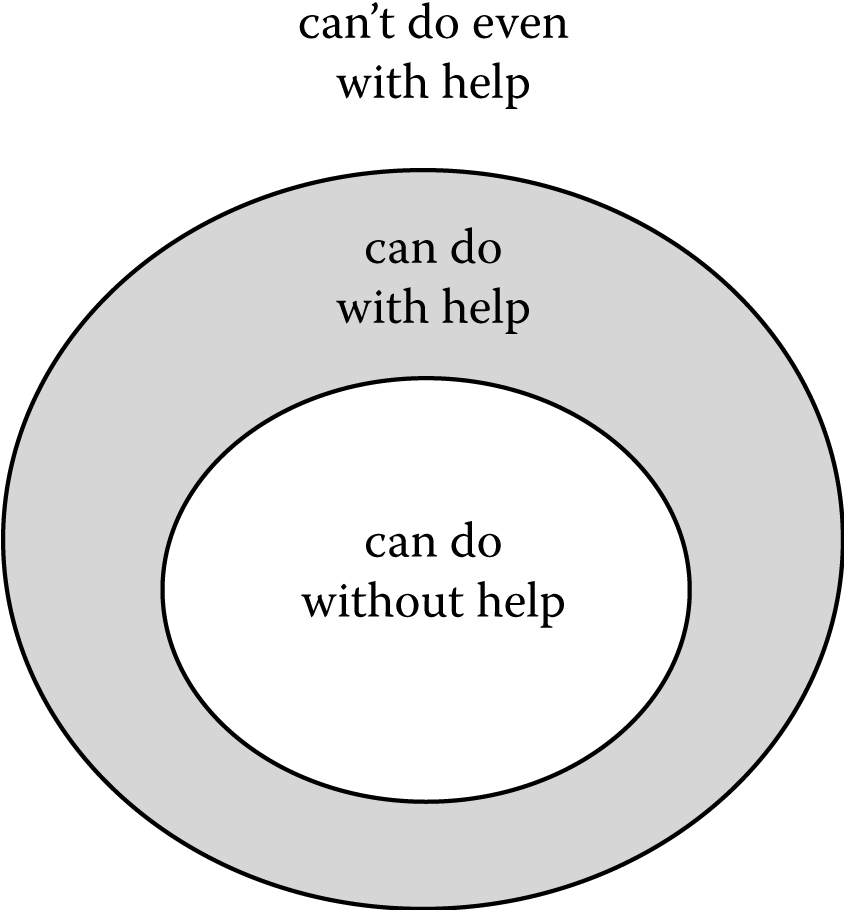
For a short definition of ZPD and its cognitive roots, please visit the Glossary on this site, or check out my books Interface.com: Cognitive Tools for Product Developers.
53:27 / Pyramid of abstraction
– Concrete language is the base of the pyramid and should be most common
– Abstract language is the top of the pyramid and should be less frequent
– To be concrete, you want to choose a precise word that also serves character, or setting, or tone
– – Example: instead of “wooden bed” ; “oak bed” ; “log bed”
– Make your sentences accomplish multiple things
– Adding senses other than sight makes things more concrete
Here are a few diagrams from one of the Product Design classes I teach:
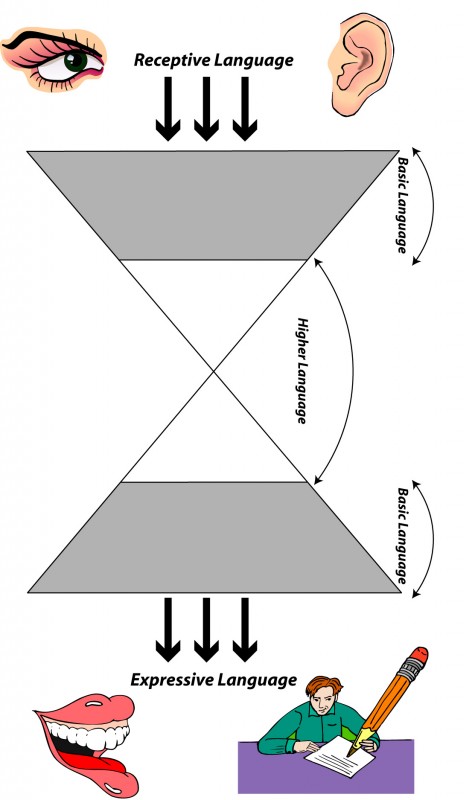
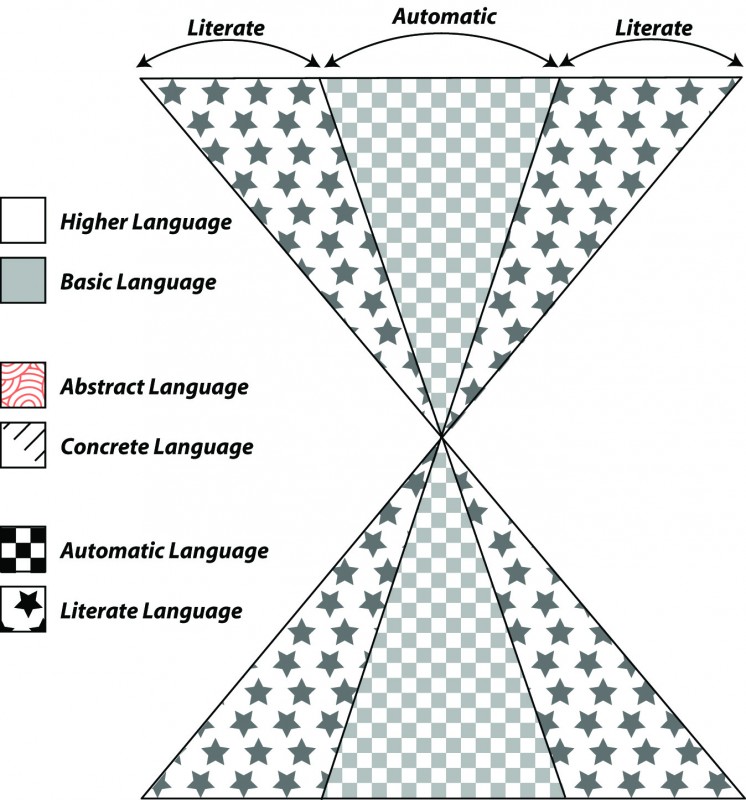
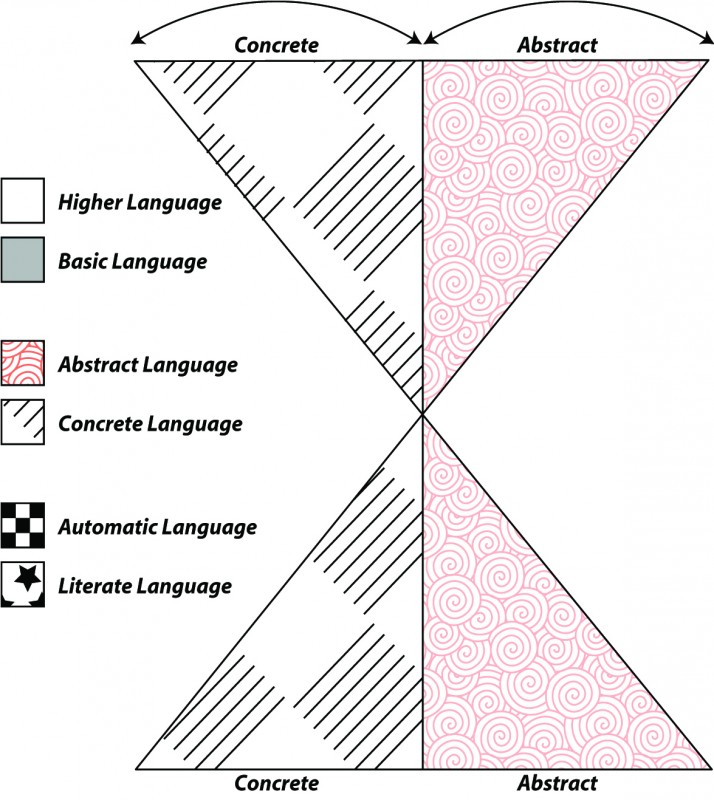
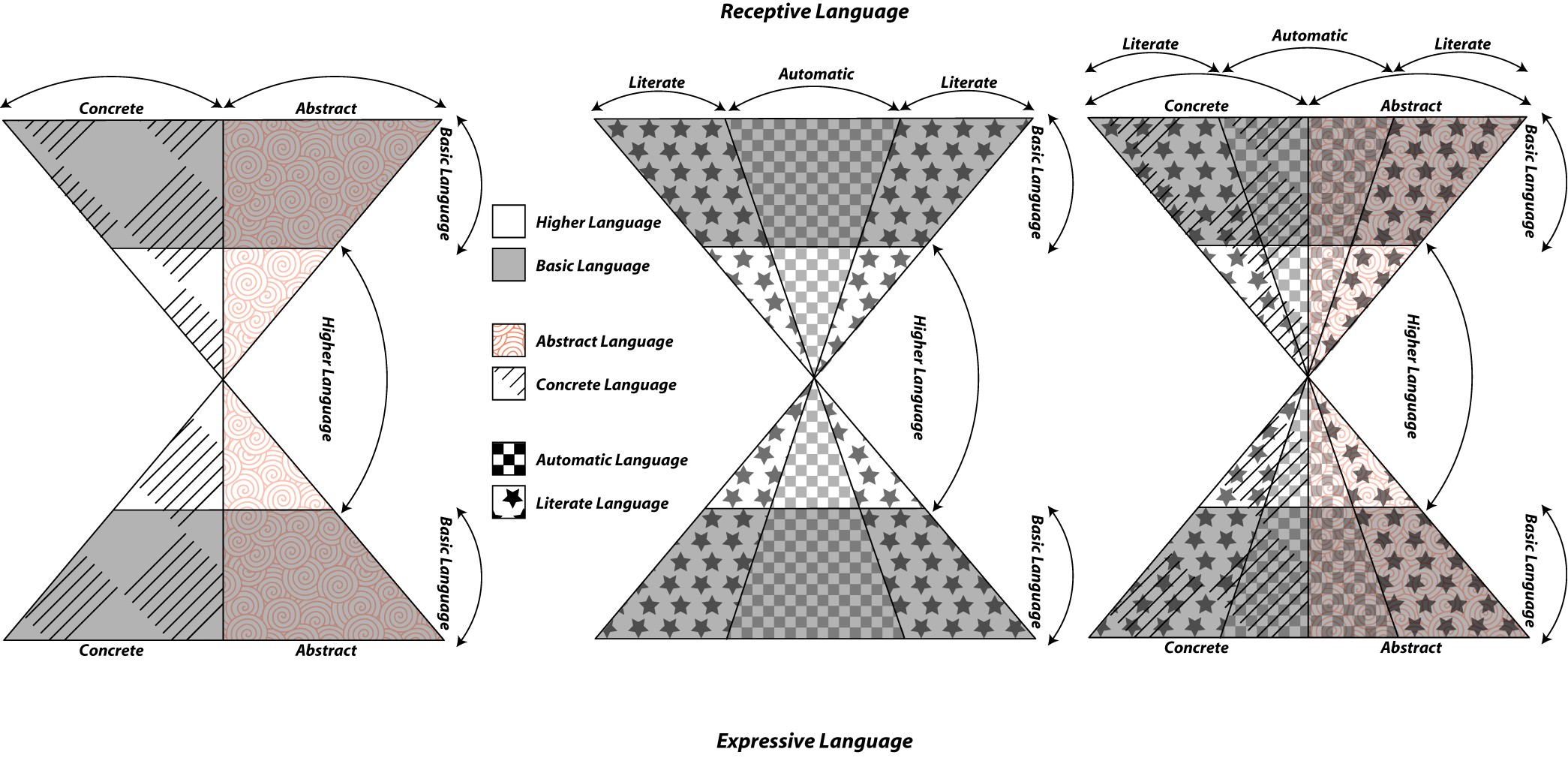
JordonCon 2: Description and Viewpoint by Brandon Sanderson
Here is another interesting lecture captured on April 24th, 2010 by zmunk (Steve?). Brandon talks about what makes the first page of your story great — 1. describe and world built without boring the reader, and 2. create a voice that is interesting and sympathetic.
Brandon Sanderson’s 2012 Semester at BYU: 4. Creative Writing — Sympathetic Characters
0:12 / Sympathetic characters
– In the fantasy genre, characters are the most important thing
– All of your characters should be sympathetic in some way (even the bad guys)
– Sympathetic characters…
– – Have some “everyman” attributes and some “superman” attributes
– – Underdog
– – Are proactive
– – Nice (or has friends who like them)
– – Quirks10:53 / Proactivity
– Make your character proactive, don’t have them wait around for the villain
– Easiest one to slip on, and will weaken the character16:43 / Show vs tell
– Give the character a unique view on life
– Show don’t tell
– – Dialogue is generally more show than tell23:10 / Character depth
– Make your characters care about things other than the plot
– If you think of your character only by their role in the story, you will lose depth
– The character’s life did not begin when the story began; they had wants and hobbies and values before the plot started33:50 / Love Interest alternatives
– Mentor & student
– Best friends who start as not best friends
– Teens are interested in romantic relationships, and it is one of the main things that draws them to books36:01 / Character building exercise (with examples)
– Build into the character things that are unanticipated
– – Unanticipated doesn’t necessarily mean “weird”
– Build a scene that shows the attributes of these characters without even mentioning their actual attributes
Brandon Sanderson’s 2012 Semester at BYU: 5. Creative Writing — Eric Stone Guest Lecture
0:12 / Intro to guest lecturer Eric James Stone
2:44 / How Eric got into writing and publishing
11:46 / Eric discusses his Nebula award nomination
23:02 / Eric’s collection of published works
24:55 / Writing short fiction
– It is not a way to make a living on its own; do it for practice and to get your name out there
– Some skills translate to long fiction form (dialogue) but others will not
– Short fiction relies on established tropes to shortcut some things37:50 / Questions from the class
Brandon Sanderson’s 2012 Semester at BYU: 6. Creative Writing — Agents, Editors, and Submissions
0:12 / Networking at cons
– Personalize queries if you can
– Editors are also at cons and easier to find than agents
– Meet published authors if you can to network8:46 / Alternatives to cons
– Find agents/editors blogs or social media
– Be familiar with the books editors have previously accepted13:52 / Meeting editors and agents
– Have a pitch if prompted, but do not bring your manuscript
– Editors are expecting to be approached, but keep it professional
– Get to know the editors, learn about their interests31:00 / Submissions
– Don’t do anything weird; double space, with page numbers32:18 / Pitches
– Have 3 pitches prepared and practiced
– – One sentence “log line”
– – One paragraph elevator pitch
– – One sheet summary (including twists)
– Fewer names is better
– Goal is to make them want to read the book; find the spark and make it a hook40:33 / Questions
– Anecdote: 1000 queries ; 100 full chapters ; 10 MS requests ; 1 bought
– Rejections should be sent within 6 months
– Gentleman’s agreement: only one editor should have a full MS at a time
– – This is phasing out
Here’s a very good description for how to write a Query Letter: Query Shark
Subject: QUERY: Title by Author
Dear (Name of Agent),
ONE: Why did you pick that agent: met at a conference; represent my favorite author; was recommended by…. Say something nice…
SECOND: A short “elevator pitch” paragraph answering the question “what is this book about?”
THIRD: Writing credits, biography, include any experience or education relevant to the story: if you are writing a hard-sci-fi, add that you are a physics Ph.D. (if you are)…
FOURTH: Genre and word count of the proposed book.
Closing: Thank you for your time and consideration…
Name
Email
Telephone
Website(s), including blogs
Twitter handle
Facebook (author’s page)
Physical Address
Here’s a link to instructions on how to properly format your manuscripts for a short story: Proper Manuscript Format.
Brandon Sanderson’s 2012 Semester at BYU: 7. Creative Writing — Archetypes, Try-Fail, and 3-Act Format
0:12 / A success story by former student Peggy Eddleman author of Sky Jumpers
6:30 / About her pitch to Sara Crowe
13:09 / Thoughts about preparing a MS before submission
14:23 / About the sale
18:36 / About the edit requests from the editor
20:00 / Choosing a good agent
– Publisher’s Marketplace is a good resource but has a monthly fee
– Literary Rambles is a good blog for YA/MG resources22:59 / Blogging
28:25 / Hours and time spent writing; writing groups
Peggy completes guest lecture, back to lecture
30:26 / The three act format
– The standard format for hollywood / screenplays. Works as a guide for books too
– Act 1: Introduction / Hero’s reaction
– Act 2: Escalation / Hero tries and fails, and makes things worse
– Act 3: Climax / Hero pulls it off37:09 / Try-fail cycles
– Hero tries to overcome problem, but each try fails and causes a setback
– Yes – But – No – And
– – Problem: they solve it BUT it gets worse; try to solve new problem but they fail AND it gets worse with new problem. Repeat.
– no matter what method you use, the idea is to increase tension43:00 / The hero’s journey / mono myth
– The hero’s circle
– – Hero starts in place of ignorance, meets “impact character”
– – Impact character calls hero to arms, then leaves or dies
– – Things go wrong and hero is in the “belly of the whale” (low point)
– – Moment of decision where hero takes action (much later in story arc than other plotting types)
– – Preceded by transformation, followed by atonement
– – Defeat evil
– – Hero returns to where they began but in wisdom
– This is an archetype NOT a checklist. You do not need to hit everything
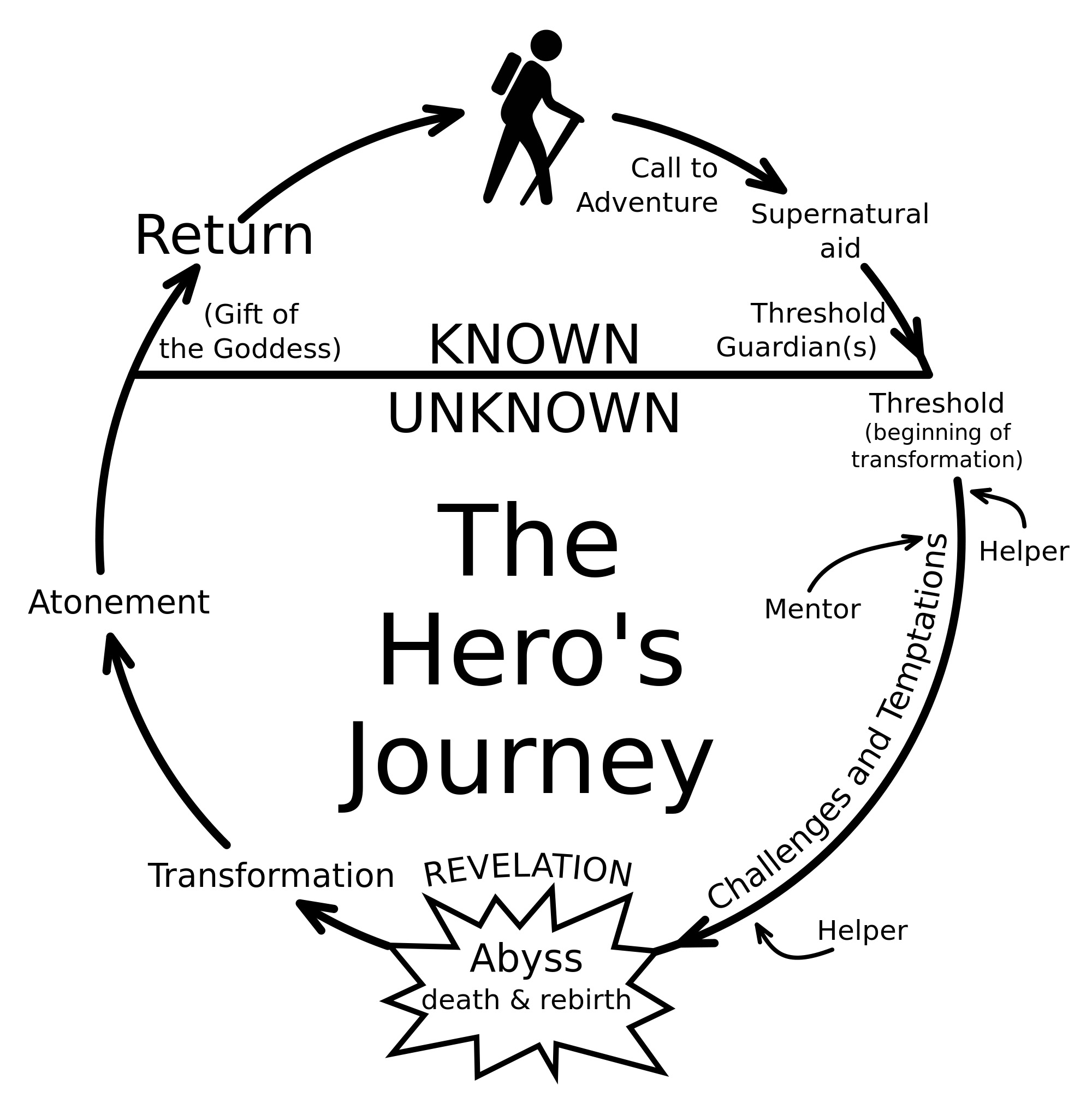
54:52 / Brandon’s own plotting method
– Find a sense of progression; this is what keeps people moving in a story
– Different ways to do this
– – Travel log (literal map progression)
– – Mystery plots (clues dropped in sequence)
– – Relationship plots
– – Big problem plot (break down big problem and solve each piece — often in heists)
– – Time bomb (X days to do something, and the timer ticks down)
– Given some of these types, break it into steps and use those in your scenes1:09:20 / Questions from class
Brandon Sanderson’s 2012 Semester at BYU: 8. Creative Writing — Agents, Editors, Royalties, and Advances
0:12 / Class questions
– How he grades the class
– Brandon still counts words per day as a metric
– How to turn off “internal editor” to just keep writing7:04 / Agents and contracts
– Agents know contracts and precedent
– Unlike hollywood, here the author is the brand so publishers generally don’t want to turn off writer14:13 / Different ways to approach contracts
– Have an agent (they take 15% of everything for length of contract)
– Hire an IP lawyer (one time fee)
– If you know a bit, do it yourself (highest risk of missing language)22:21 / Agent contacts
– Agents have contacts at the publishing houses and can get your book to the right editor
– Counter argument: less incentive to argue for the extra money since their cut is small; might only send to narrower range of editors27:11 / Agents advocate for author
– You can keep a friendly working relationship with editor, and let agent be the bad cop30:12 / Translation rights
– Very hard to break into foreign markets without an agent; this is a big deal early in writing career
– 10% to local agent, 10% to foreign agent36:10 / Markets
– An advance is roughly what the publisher thinks the book will earn in the first three years
– Fantasy markets:
— Biggest: North American English (USA, Canada, Philippines)
— Second: World English (UK, Australia, India)
— Third: German
— Fourth: French, Japanese, Chinese (simplified+complex)
– Doing foreign rights on your own is VERY tough44:46 / Misc agent roles
– Auctions
– Editorial: agents agree to pick up a MS pending certain changes
– Some people don’t like this; you can get caught in a revision loop trying to win agent over51:44 / Other thoughts
– Changing an agent is very hard once a contract is signed57:25 / Advances and royalties
– All contracts will start with an advance
– All money is advanced against royalties
– Once the publisher has sold enough copies to earn back their advance (“earned out”), then you collect royalties thereafter
– Not “earning out” does not mean failure
– Royalties (approximate)
– Hard cover 10-15%
– Paper back 6-8%
– Ebooks 25% (of net, compared to cover price)
– Royalties don’t really change even when you are well known
– Because fantasy and sci-fi are a drop in the bucket compared to other genres
– Bigger advances are bigger gambles because it is harder to earn out
– PRO: If they are paying a lot for the book, they are more likely to push it harder
– CON: If you don’t earn out and grossly under-perform to expectations, your career might be over.1:13:52 / Marketshare of genres
– Biggest genre is non-fiction (because of self-help books)
– Children’s out sells non-children’s (as expected because wider potential audience)
– Romance is 3rd largest selling (~50% of adult fiction)
– Thrillers are 4th largest selling (~30% of adult fiction)
– The rest is split between mystery, fantasy, sci-fi, horror, western, etc.
Brandon Sanderson’s 2012 Semester at BYU: 9. Creative Writing — World Building & Magic
0:12 / Questions
– Who chooses excerpts for books
– Advice on how to process feedback from friends
– Comments on humor
– How do you outline a multi-book project11:16 / Setting as a character
– Character and plot need to be the core of your story
– – You should still have a fantastic setting
– Treat your setting like a cast of characters
– – Each setting should have the same main things
– – – Personality, a backstory, quirks, strengths/flaws17:00 / Geography and maps
– Key levels: World, Nations, Local setting
– – If you want to be a professional writer, building this should be a few months at most
– Coast lines are irregular21:39 / Rivers
– Rivers flow away from mountains and towards oceans
– Rivers combine, they don’t split
– They flow as directly to the coast as possible
– Lakes feed out from only one place26:55 / Mountains
– Come from tectonics or volcanos, so consider thinking about your plates
– Tall mountains are new, short mountains are old29:30 / Deserts
– “Rain shadow” mountains block rain to one side only
– Seem to occur at the 30-deg latitudes
– Remember to transition between regions34:02 / Maps in general
– Maps are optional
– Publisher probably wont prioritize making a map; you can have your own made and provide
– Don’t send a map with your manuscript
– 1 page of line art can go for ~$500
– You should make a map for yourself if your characters move around so you can keep track of distances (even if you don’t include it)
– – Note: horses don’t move much faster than people for long distances41:00 / Notes on cities
– 10 farmers needed for every 1 city dweller
– 25K is a big medieval-stage city
– – Food/water deliver and waste removal govern size of cities
– Second city is 1/2 size of first city, third is 1/3, fourth is 1/4th
– Ports/harbors need to be defensible48:05 / Cultures
– Ask a few “what if” questions about government, or religion, etc
– – Gender roles (not just reversed)
– – Race relations
– – – Brandon says to Google “racefail” to learn about pitfalls with doing this badly, here is one result A themed summary of RaceFail ’09 in large friendly letters for those who think race discussions are hard
– – Language, offenses, economics, technology, warfare, family
– Pick maybe ~3 topics, and give them a few quirks each1:00:12 / Magic systems: Sanderson’s first law
– Magic is a sliding scale between “wonder” and being a “plot device”
– Don’t try to solve plot problem with your magic unless you’ve let the reader understand the rules of magic
– – This really comes down to foreshadowing to avoid the deus ex machina
– Hard vs Soft magic: Hard means clearly defined rules, soft means not clearly defined
– – Example: Wolverine has very specific super powers that we all know = HARD system
– Advanced technology in sci-fi can be handled by the same rules as magic1:16:05 / Sanderson’s second law
– Limitations are more interesting than abilities
– – Pick good limits to your magic, and a good cost for using your magic
– These are usually the core of good conflicts with your magic system1:20:44 / Sanderson’s third law
– Everything should be interconnected
– When you add magic to the mix, consider the ramifications on your cultures and world
I want to stop and mention here that I completely agree with Brandon — magic needs to make internal sense. Stories turn sour (for me and my sons) when authors suddenly introduce a new power or magic never before encountered in the book as a way of solving story problems. New magic is never the answer!
Below is another version of this talk. I find that I discover new gems in Brandon’s presentations…
Brandon Sanderson’s 318R, 2016: #4. Creative Writing — World Building
Brand new for 2016 are Brandon Sanderson’s writing lectures at BYU. This lecture was delivered on January 28, 2016. Filmed by Jon Deering and Earl Cahill (@spackest), edited by Earl Cahill.
0:08 questions from the class
1:05 do I need to follow these plotting formats?
4:45 how do I make a hero’s journey feel new?
8:36 world building
11:58 the iceberg
16:53 maid and butler dialogue
23:03 prologs
25:18 too much iceberg?
30:00 physical and cultural
38:30 Grandpa Tolkien
54:45 writing the other
58:30 feminist theory
Brandon is not the only one who has good ideas on world building. Orson Scott Card talks about creating maps of his worlds prior to the story. He said that he starts by doodling and then slowly gets excited by the possibilities of his new world. He uses maps as an inspiration: How to Write Science Fiction and Fantasy, Cincinnati: Writer’s Digest Books (1990):
“I like to draw maps. That’s how I doodle when other people are talking, by drawing coastlines and then putting in mountains, rivers, cities, national boundaries. Then, if the map that results intrigues me, I begin to make up more information — which nations speak the same language, what their history has been, which nations are prospering, which waning.” — Orson Scott Card
Brandon Sanderson’s 2012 Semester at BYU: 10. Creative Writing — Dialogue & Prose
0:12 / Questions from the class
4:45 / Dialogue
– Always tell the reader who is talking early in dialogue, unless it is really clear
– A “beat” shows what someone does along side their dialogue, and then attribution is not required. Put these things on the same paragraph
– – Don’t use too many beats
– Readers can read dialogue really fast, and will skip a lot of the beats and attributions13:40 / Said Bookisms
– You should use “asked” and “said” in almost all your attributions; other terms will slow the story
– A lot of the other bookisms are “tells” and it is better to “show”18:46 / Replacing adjectives and passive voice
– A lot of editors say “throw away your thesaurus”
– – The point is don’t use a word you don’t know just to expand your vocabulary; use it to find the right word you already know
– Using the right verb is the secret to good prose (adverbs and adjectives are weaker)
– – Find the right verb or noun so you don’t need the adverb and adjective
– – – “he walked quietly” is not as good as “he crept”
– It is okay to use a word your reader might not know if your context is strong and you don’t do it too much
– Cut passive/”to be” when possible
– – This can be done almost every time30:19 / Styles of prose
– Brandon uses “Orwellian”: write so the prose is a pane of glass that lets you see right through to the story on the other side
– – The words are as translucent as possible
– Alternative is stained glass prose
– – Here the word choice adjusts the story behind and the writing itself is part of the story
– Purple prose is when it is done wrong. Using the wrong words35:50 / Self publishing
– Ebooks sell faster than print
– Self publishing is much cheaper and easier than a few years ago (as of lecture date in 2012)
– Royalties are 70% (if priced between 2.99 and 9.99 on Amazon)
– The fundamentals have not changed in last 20 years, it is just much easier to do it
– – Your main hurtle is still: you have to do everything yourself
– – Getting shelf space is much harder without a publisher
– – Having a platform is very helpful if you want to self publish
– – All the marketing comes down to you
– – – Most people do this with a blog52:17 / The mechanics of self publishing
– A good cover is still important; min will be $250
– Pay for a professional copy editor; couple hundred dollars1:00:00 / Titles
– Shorter titles sell better1:04:10 / Business models for self publishing
– For slow writers, self publishing can be bad for you; common model is to release as much as you can and price as low as you can, to get a reader base1:06:32 / The benefits of traditional publishing
– The publisher does a lot of things for you
– Legal department
– 5K-20K paid for covers easily
– Assign an editor to you who can be your coach
– They get you co-op space in stores and on Amazon, which is very hard to do yourself1:18:50 / Final questions on self publishing
– If you do a good job self publishing it gives you leverage with traditional publishers
– Short thriller and romance books (~8K words) sell best on ebook
– Middle grade is bad market for ebooks. YA/teens is fine.
Brandon Sanderson’s 2012 Semester at BYU: 11. Creative Writing — Fight Scenes & Romances
0:12 / Misc questions
13:02 / Making stories meaningful
– Novel writing is a form of entertainment
– Some people build stories around a meaning (C.S. Lewis)
– – Some don’t (Tolkien)
– Avoid being preachy by not putting in straw men22:12 / Fight scenes
– Show, don’t tell; important here
– Blow-by-blow narrative is not as fun as visual media
– – Many people skip fight scenes entirely
– Clarity is king: be concrete and reduce metaphorical language
– You want the character to feel the chaos of battle, you DON’T want the reader to feel chaos while they try to read the scene32:08 / Things movie fight scenes can’t do
– Show thoughts and emotions
– – Use character thoughts as “shows”
– We can control pacing better than visual media
– Hit all senses
– Emphasize these things over blow-by-blow38:59 / Larger narrative flow
– What is main purpose of a sequence?
– – Plan the tone of the fight sequence to achieve this purpose
– Advancing the plot is usually not enough; have the scene accomplish more than one thing
– You don’t want filler scenes; every scene should have something cool50:14 / Realism in fights & romance
– You can take license, just decide what style you are going for
– Real fights, two on one, hero dies; injury, hero is out of action
– Most armies will break after 10% losses
– Real romance is a lot of work in a story
– – A lot of people looking for a romantic subplot aren’t looking for a strictly real-life romance1:04:15 / Plotting romances
– Make them compliment one another; not just because they are the only male/female of age in the story1:08:30 / Exercise of plotting a romance
– Relationship sub-arc should parallel the main arc, but can peak just before or just after
– Build 3 scenes things go right; build 3 scenes where it goes wrong; string these together as a try-fail cycle
Brandon Sanderson’s 2012 Semester at BYU: 12. Creative Writing — Contracts & Rights
1:52 / Avoiding scams in traditional publishing
– Money should always flows towards the author
– – No up front fees; no reading fees; conditional publish clauses
– Various online forums to help, e.g., WriterBeware blog
11:20 / Contracts for novels
– Rights of first refusal clause
– Everything is negotiable
– Advances
– – Common is half on signing, half on publication
– Royalties
– – Covered in lecture Sanderson 2012.8 – Agents, Editors, Royalties, and Advances (see above)22:47 / IP Rights, Translation, etc
– Keep 100% for yourself normally
– – Except for world English
– Publisher normally keeps Book Club rights
– Ebook rights are a battle ground
– Keep your dramatic rights
– Audio rights are negotiable44:43 / Small but important clauses
– Indemnity clause
– Copyright
– Due date, reversion of rights date
– Marketing plan52:26 / Short story contracts
– Usually paid per word (1 cent – 25 cents)56:25 / Getting a good agent
– Can be hard to find
– Tons of scam agents
– Check their client list to see if they are legit
Brandon Sanderson’s 2012 Semester at BYU: 13. Creative Writing — Revisions and Other Misc Topics
0:12 / Misc questions
– Tips on foreshadowing
– – Usually you need to be more heavy handed than you think
– Good working relationships with editors and agent
– – Let your agent be the bad guy
– Pen names
– – Very few good reasons to use a pen name
– Making magic feel rare9:22 / Brandon’s revision process
– Very individual process
– – Brandon became a good writer when he learned how to revise
– He writes the book straight through, changing things mid stride without going back (adding themes, removing characters, etc)
– – For Brandon, momentum is everything so he doesn’t stop
– Version 1: Straight through
– Version 2: Continuity
– – Fixes everything he noted as he went through version 1
– Version 3 (after small gap): First polish draft
– – Cut 15% line by line, clean up prose
– After v3, he sends it to alpha readers (agent, editor, writing group, wife)
– – 6 month gap; distance from project is wonderful
– – For new writers, write a new book during this break
– Version 4: Incorporate alpha feedback and big-picture stuff
– – In the Way of Kings book, he created a new POV for Adolin at this stage
– – This is the hardest revision for him; fundamental changes might mean major rewrites
– Version 5: Polish; less on cutting, more on dialogue, voice, etc
– Sends it to betas and gets feedback; shorter break
– Version 6: Incorporate editor and beta comments and other final thoughts
– Version 7: Copyedit (with publisher)
– Version 8: Proofread (with publisher)23:46 / Questions about revisions
– Alpha readers are better if they are writers themselves; beta readers are better as non-writers.
– Writing groups are bad with pacing
– For Brandon, Versions 2 through 6 take about half as long (combined) as the time it took him to write Version 1 through36:07 / Revising for discovery writers
39:32 / Writer psychology
– Being a writer is about observing people and extrapolating
– Find a motivation factor to get yourself to work48:07 / Misc questions
52:27 / Thriller plotting
– Start and end every chapter on a hook
– Brandon doesn’t do this as much; epic fantasy is different than thriller, his chapters are 3-4K words1:00:19 / Linguistic variations
***
For a fun article and interview with Brandon, check out: Brandon Sanderson: Heralding a New Era of Fantasy
How to Start a Story: Beginning by Orson Scott Card
While I love Brand’s lectures, he missed a few things, so here is my research and additions.
This example of a rewrite was a true revelation to me. I hope you experience the same awe… Uncle Orson’s Writing Class Here, Uncle Orson gives a concrete example of first chapter rewrite of Bean — simply amazing progress and a good example of how to show the world and start a story on a strong action sequence with a powerful emotional punch.
Other lessons in this series are rather wonderful as well.
***
And here’s a 2017 Scientific American Article on the mathematics of stories: Great Literature Is Surprisingly Arithmetic This is a diagram from the article, please visit the Scientific American to get the full impact of the research.
